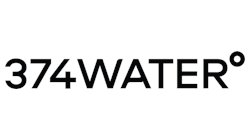Water quality standards are considered by most to be the soul of the Clean Water Act (CWA). Using this analogy, the National Pollutant Discharge Elimination System (NPDES) is the heart - the moving part that keeps the rest of the programs flowing.
With public input, states are required to determine a water body’s designated uses - aquatic, habitat, recreational, industrial, water supply - then develop water quality standards based on these uses. Monitoring determines if the water body is meeting the U.S. Environmental Protection Agency approved standards.
If water quality standards aren’t being met, the states must develop strategies and controls under CWA § 303(d) to create Total Maximum Daily Loads (TMDLs) - see: www.epa.gov/owow/tmdl/ and www.tmdls.net.
The legal underpinning for all these processes is the implementing strategies:
• Regulatory: 1) Section 401 - Certification; 2) Section 402 - NPDES permits; 3) Section 404 - Wetlands
• Voluntary: Section 319 - Nonpoint Source Program
• Funding: 1) State Revolving Loan Fund (SRF); 2) Section 319 - Nonpoint Source Program; 3) Section 106 - State Management Funding
Of the estimated $181 billion in CWA infrastructure need, 29.9% is for wastewater collection and conveyance, 27.9% is for combined sewer overflow correction, 31.6% is for wastewater treatment systems, 7.6% for nonpoint source controls, and 3% for stormwater management. Together, urban runoff and storm sewer discharges ranked as the third most prevalent source of impairment in our lakes and rivers.
Generally, all of the above require an NPDES permit and the number of permits and permit requirements increase daily (see: www.epa.gov/npdes/). With addition of permits for stormwater in 1987 and requirements for Confined Animal Feedlot Operations (see: www.epa.gov/guide/cafo/ and www.state-cafos.org), the permitting universe grew from about 100,000 to 500,000. NPDES permits for ballast water from oceangoing vessels are yet to be fully determined. Also unknown is the permitting impact of water transfers, which will be decided by courts out West. Suffice it to say, the increase in new permits is likely to be huge.
When combined with this burgeoning expanse of required NPDES permits and a decrease in Section 106 State Management grants, exacerbated by a state funding shortfall of between $735-$960 million annually, states are becoming increasingly dependent on permit fees and general permits - and look to the federal government to allow for administrative extension of some permits for 5 to 10 years.
Forty-five states are delegated to run NPDES programs by the federal government through the USEPA and a four way “tug of war” is brewing with:
1. USEPA wanting to delegate NPDES authority to the five non-delegated states,
2. The courts, and some environmentalist organizations calling for withdrawal of some currently delegated programs, including the withdrawal of the Arizona delegation stemming from concerns over endangered species,
3. The anticipated retirement of over 20% of the water program workforce in the next 3-5 years, and
4. The increasing administrative and transactional costs associated with federal grants management, meaning that nearly as much of the federal dollar is now spent on bean counting as for environmental protection.
Combining the increasing permit universe, increasing transactional costs, increasing program requirements, pressure of court decisions and reductions in supporting federal capital, a number of states are reexamining the benefits of NPDES delegation. They’ve got an eye toward higher permit fees, expanded use of general permits and administrative extensions, and ultimately the return of NPDES programs to the USEPA. IWW
About the Author: Roberta (Robbi) Savage is executive director of the Association of State and Interstate Water Pollution Control Administrators (www.asiwpca.org). She is also president of America’s Clean Water Foundation (www.acwf.org) as well as creator of World Water Monitoring Day (www.worldwatermonitoringday.org).

